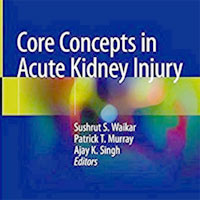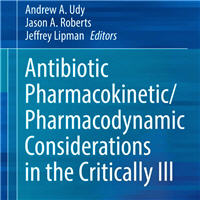Stories Category: Intensive Care
Early Reapplication of Prone Position During VV-ECMO for ARDS
A combination of prone positioning (PP) and venovenous extracorporeal membrane oxygenation (VV-ECMO) is safe, feasible, and associated with potentially improved survival for severe acute respiratory distress syndrome (ARDS).... read more
Tracheal Intubation in Critically Ill Adults with a Physiologically Difficult Airway
Using a Delphi method, agreement among a panel of international experts was reached for 53 statements providing guidance to clinicians worldwide on safe tracheal intubation practices in patients with a physiologically difficult... read more
Effect of Different Shock Conditions on Mesenteric Hemodynamics
The velocity parameters of SMA Doppler ultrasound such as TAMV and PSV can reflect cardiac function. The measurements of SMA RI and PI are correlated with lactate levels, having a positive predictive value for hyperlactatemia... read more

Basics of Mechanical Ventilation
This book is a practical and easily understandable guide for mechanical ventilation. With a focus on the basics, this text begins with a detailed account of the mechanisms of spontaneous breathing as a reference point to... read more
Outcomes of Different Steroid Dosing Regimens in Critical Covid-19 Pneumonia
The study found that high-dose steroids in the treatment of critically ill patients with COVID-19 pneumonia did not confer any mortality benefit and were associated with an increased risk of dysglycemia and superimposed infections. A... read more
Factors Affecting the Duration of Hospitalization in Urology and Nephrology Patients in the ICU
Factors affecting ICU stay length in Urology and Nephrology patients who required close monitoring and specialized medical staff were investigated. The study found a positive association between prolonged ICU stays and elevated... read more
Glucose Metabolism Disorders: Pre-hospital Oxygen Therapy and Saturation Variability in COVID-19 Patients
The COVID-19 pandemic has revealed that viruses can have multiple receptor properties, penetrating various tissues and causing mutations in various genes, thus promoting a range of metabolic disorders. The purpose of... read more
Ventilator-associated Pneumonia Risk Factors in Patients with Severe COVID-19
Patients with COVID-19 are at high risk of VAP, which may be related to issues other than prolonged mechanical ventilation (MV) time. Multiple factors increase the chances of these patients developing VAP, including:... read more
Noninvasive Monitoring of Changes in Cerebral Hemodynamics During Prolonged Field Care for Hemorrhagic Shock and Hypoxia-Induced Injuries With Portable Diffuse Optical Sensors
There is a consistency in blood flow measures in both injury mechanisms (hemorrhagic shock and hypoxia), which is significant as the new prototype system provides similar measures and trends for each brain injury type, suggesting... read more

Core Concepts in Acute Kidney Injury
This comprehensive guide covers the causes, characteristics, and presentations of acute kidney injury (AKI), as well as prevention and treatment. The first part of the book features chapters on the epidemiology and diagnosis... read more
Endothelial Activation and Microcirculatory Disorders in Sepsis and Critical Illness
The endothelium is one of the largest organs in the human body and lines the blood vessels and microcirculation of all the vital organs. As such, it functions as a massive and critical surveillance system to orchestrate recognition... read more
Ultrafast Cooling With Total Liquid Ventilation Mitigates Early Inflammatory Response
Ultrafast cooling with TLV mitigates neuroinflammation and attenuates acute brain lesions in the early phase following resuscitation in large animals subjected to cardiac arrest (CA). Brain injury is one of the most serious... read more
Pitfalls in the Management of Mechanical Ventilation: ARDS and Hypermetabolic States
Mechanical Ventilation (MV) is an invaluable, lifesaving therapy for patients with acute respiratory failure, but it must be individualized for each specific underlying physiologic derangement to maximize benefits and minimize... read more
Prevalence and Risk Factors of ICU-acquired Weakness in COVID-19 Patients
The prevalence of ICUAW in patients with COVID-19 was considered relatively high. Older age, pre-existing hypertension, medical intervention of prone position, NMBA use, needed tracheostomy and RRT were likely risk factors.... read more

Antibiotic Pharmacokinetic/Pharmacodynamic Considerations in the Critically Ill
This book provides unique insights into the issues that drive modified dosing regimens for antibiotics in the critically ill. Leading international authors provide their commentary alongside a summary of existing evidence... read more
Pressure Support Ventilation During ECMO Support in Patients with ARDS
In the initial phases of veno-venous extracorporeal membrane oxygenation (VV ECMO) support for severe acute respiratory distress syndrome (ARDS), ultraprotective controlled mechanical ventilation (CMV) is typically employed... read more
Outcomes for Mechanically Ventilated Patients with Acute Myocardial Infarction Admitted to Medical vs Cardiac ICUs
In this multicenter, national analysis of ICU admission for critically ill patients with AMI, we found that admission to the Cardiac Intensive Care Unit (CICU) was associated with lower in-hospital mortality than patients... read more








